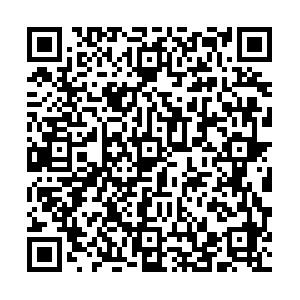Application of Scenario Simulation Nutrition Intervention to Improve the Cognitive Level of Children with Diabetes at Different Ages
-
摘要:
目的 探讨情景模拟营养干预对提高不同年龄糖尿病患儿认知水平的应用。 方法 选择2018年1月至2019年12月昆明市儿童医院收治的120例学龄期糖尿病患儿为研究对象,分为儿童组和青少年组各60例,分别进行实物模拟、视频模拟和角色模拟三种形式的情景模拟营养干预,并对干预前后两组患者的糖尿病知识认知水平、血糖和三种形式情景模拟的效果进行研究。 结果 两组糖尿病患儿通过情景模拟营养干预,糖尿病知识认知水平均有所提高,差异有统计学意义(P < 0.05),空腹血糖和餐后2 h血糖在出院时和出院6个月较入院时明显降低,差异有统计学意义(P < 0.05);在三种形式的情景模拟营养干预中,两组患儿对实物模拟形式接受程度不大,差异无统计学意义(P > 0.05),青少年组视频模拟形式接受程度高于儿童组,差异具有统计学意义(P < 0.05),儿童组角色模拟形式高于青少年组,差异有统计学意义(P < 0.05)。 结论 情景模拟营养干预有助于提高糖尿病患儿认知水平,能有效控制血糖,促进自我管理能力的养成。在实施情景模拟营养干预过程中,对于青少年组视频示范干预形式更为适用,而儿童组角色模拟干预形式更为适用。只有选择合适的干预方式,才能有效的提高糖尿病患儿的生活质量,减少和延缓合并症的发生和发展,使健康教育达到较好的效果。 Abstract:Objective To explore the application of scenario simulation nutrition intervention to improve the cognitive level of children with diabetes of different ages. Methods From January 2018 to December 2019 120 school-age children with diabetes were divided into children group and adolescent group, each consisting of 60 cases. Scenario simulation nutrition intervention was carried out in three forms: physical simulation, video simulation and role simulation. And the effects of cognitive level of children with diabetes, blood glucose and three forms of scenario simulation were studied before and after the intervention. Results The two groups of children with diabetes had improved their knowledge of diabetes through scenario simulation nutrition intervention, and the difference was statistically significant(P < 0.05).Fasting blood glucose and 2-hour postprandial blood glucose were significantly lower at the time of discharge and 6 months after discharge than at the time of admission, and the difference was statistically significant(P < 0.05). Among the three forms of scenario simulation nutrition intervention, the two groups had little acceptance of the physical simulation form. There was no significant difference between the two groups(P > 0.05).The acceptance of video simulation intervention in the adolescent group was higher than that in the child group(P < 0.05).The role simulation intervention in the child group was higher than that in the young group(P < 0.05). Conclusions The situational nutritional intervention is helpful to improve the cognitive level of children with diabetes, effectively control blood glucose, and promote the development of self-management ability. In the process of implementing situational nutritional intervention, video demonstration intervention is more suitable for the youth group, while role simulation intervention is more suitable for the children group. Only by choosing the right way of nutritional intervention can we effectively improve the quality of life of children with diabetes. -
Key words:
- Scenario simulation /
- Diabetic children /
- Nutritional intervention
-
表 1 两组患儿一般资料比较[n(%)]
Table 1. Comparison of general information of the two groups of children [n(%)]
组别 n 性别 户籍 家属文化程度 病程 男 女 城镇 农村 中专及以下 大专及本科 硕士及以上 < 1 a 1~3 a ≥3 a 儿童组 60 28(46.67) 32(53.33) 38(63.33) 22(36.67) 28(46.67) 27(45) 5(8.33) 12(20) 32(53.33) 16(26.67) 青少年组 60 35(58.33) 25(41.67) 31(51.67) 29(48.33) 23(38.33) 31(51.67) 6(10) 8(13.33) 28(46.67) 24(40) 表 2 两组患者干预前后糖尿病基础知识认知水平得分比较(
$\bar x\pm s $ )Table 2. Comparison of cognition level scores of diabetes basic knowledge before and after intervention between the two groups (
$\bar x\pm s $ )组别 n 糖尿病基础知识 血糖管理 饮食管理 生活方式及体重管理 儿童组 青少年组 儿童组 青少年组 儿童组 青少年组 儿童组 青少年组 干预前 60 11.60 ± 0.30 12.60 ± 0.42△ 12.73 ± 0.43 12.92 ± 0.45△ 10.90 ± 0.48 13.02 ± 0.59△ 7.80 ± 0.43 8.60 ± 0.51△ 干预后 60 22.00 ± 0.29 22.17 ± 0.27△ 21.95 ± 0.25 22.17 ± 0.26△ 21.68 ± 0.26 22.82 ± 0.25△ 21.60 ± 0.24 22.43 ± 0.26△ 与儿童组比较,△P < 0.05。 表 3 两组患儿干预前后血糖比较(mmoL,
$\bar x\pm s $ )Table 3. Comparison of blood glucose between two groups of children before and after intervention (mmoL,
$ \bar x\pm s$ )项目 青少年组(n = 60) 儿童组(n = 60) 入院时 出院时 出院6个月 入院时 出院时 出院6个月 空腹血糖 9.03 ± 0.22△▲# 7.42 ± 0.68 5.94 ± 0.93 8.72 ± 0.14◇☆ 7.13 ± 0.70 6.01 ± 0.95 餐后2 h血糖 15.08 ± 0.49△▲# 11.65 ± 0.57 10.98 ± 0.46 15.27 ± 0.77◇☆ 12.10 ± 0.68 11.02 ± 0.67 与儿童组入院时比较,△P > 0.05;与青年组出院时比较,▲P < 0.05;与青年组出院6个月比较,#P < 0.05;与儿童组出院时比较,◇P < 0.05;与儿童组出院6个月比较,☆P < 0.05。 表 4 不同形式情景模拟对两组糖尿病患者掌握营养干预达标情况比较[n(%)]
Table 4. Comparison of different forms of scenario simulations on the achievement of nutritional intervention standards for two groups of diabetic patients [n(%)]
形式 青少年组(n = 60) 儿童组(n = 60) χ2 P 实物模拟形式 52(86.67) 50(83.33) 0.261 0.609 视频模拟形式 54(90) 40(66.67) 9.624 0.002 角色模拟形式 45(75) 54(90) 4.675 0.031 -
[1] 包美珍. 儿童糖尿病的胰岛素治疗[J]. 药品评价,2008,5(3):132-134. doi: 10.3969/j.issn.1672-2809.2008.03.013 [2] Carracher A M,Marathe P H,Close K L. International diabetes federation 2017[J]. J Diabetes,2018,10(5):353-356. [3] Rosenbek M L,Wagner L,Lonvig E M,et al. The effect of motivational interviewing on glycaemic control and perceived competence of diabetes self-management in patients with type 1 and type 2 diabetes mellitus after attending a group education programme:a randomised controlled trial[J]. Diabetologia,2011,54(7):1620-1629. [4] Wong C,Harrison C,Britt H,et al. Patient use of the internet for health information[J]. Aust Fam Physician,2014,43(12):875-877. [5] Jones H,Edwards L,Vallis T M,et al. Changes in diabetes self-care behaviors make a difference in glycemic control:the Diabetes Stages of Change(DiSC)study[J]. Diabetes Care,2003,26(3):732-737. [6] de Boer D,Delnoij D,Rademakers J. The importance of patient-centered care for various patient groups[J]. Patient Educ Couns,2013,90(3):405-410. [7] 龚凤琴,徐忠琴,阮词芬,等. 冠心病患者与家属互述结合情景模拟健康教育研究[J]. 护理学杂志,2016,31(23):5-8. doi: 10.3870/j.issn.1001-4152.2016.23.005 [8] 李建丽. 全程护理干预在学龄期哮喘儿童雾化治疗中的应用效果研究[J]. 护理研究,2015(9):1125-1126. [9] Mayer-Davis E J. ISPAD clinical practice consensus guidelines 2018:definition,epidemiology,and classification of diabetes in children and adolescents[J]. Pediatr Diabetes,2018,19(27):7-19. [10] Gonzi G,Sestigiani F,D'Errico A,et al. Correlation between quality of cardiopulmonary resuscitation and self-efficacy measured during in-hospital cardiac arrest simulation; preliminary results[J]. Acta Biomed,2015,86(1):40-45. [11] 郑英奇,王爱芬,洪慧娟. 应用情景模拟开展糖尿病健康教育的效果评价[J]. 中国健康教育,2013,29(12):1127-1128. [12] 吴翠萍. 1型糖尿病病人的健康教育及随访管理[J]. 广西医科大学学报,2004,21(增刊):271-272. [13] 孙赵娜,李云云,吴兰君,等. 精准化理念的健康宣教方案对妊娠期糖尿病患者认知水平及焦虑、抑郁情绪的影响[J]. 现代临床护理,2017,16(1):38-42. doi: 10.3969/j.issn.1671-8283.2017.01.012 [14] 赵静,高珊,韩兰稳. 个体化综合干预在糖尿病前期人群中的效果评价[J]. 中国健康教育,2017,33(2):154-157. [15] 张凝凝,谭玉琴,张利峰. 1型糖尿病患儿自我管理行为的研究进展[J]. 护士进修杂志,2019,34(12):1111-1115. [16] 陶花,林征,黄晓萍,等. 以家庭为中心的护理对青少年 糖尿病患者家庭环境及血糖控制的影响[J]. 中华护理杂志,2014,49(11):1342. doi: 10.3761/j.issn.0254-1769.2014.11.013 [17] 张红,张丽,吴兰华. 家庭护理干预对儿童期糖尿病患儿治疗依从性及生活质量的影响[J]. 实用临床医药杂志,2016,20(6):114-116. [18] Danne T,Kordonouri O. Current challenges in children with type 1 diabetes[J]. Pediatr Diabetes,2007,8(6):3-5. -





 下载:
下载: 




